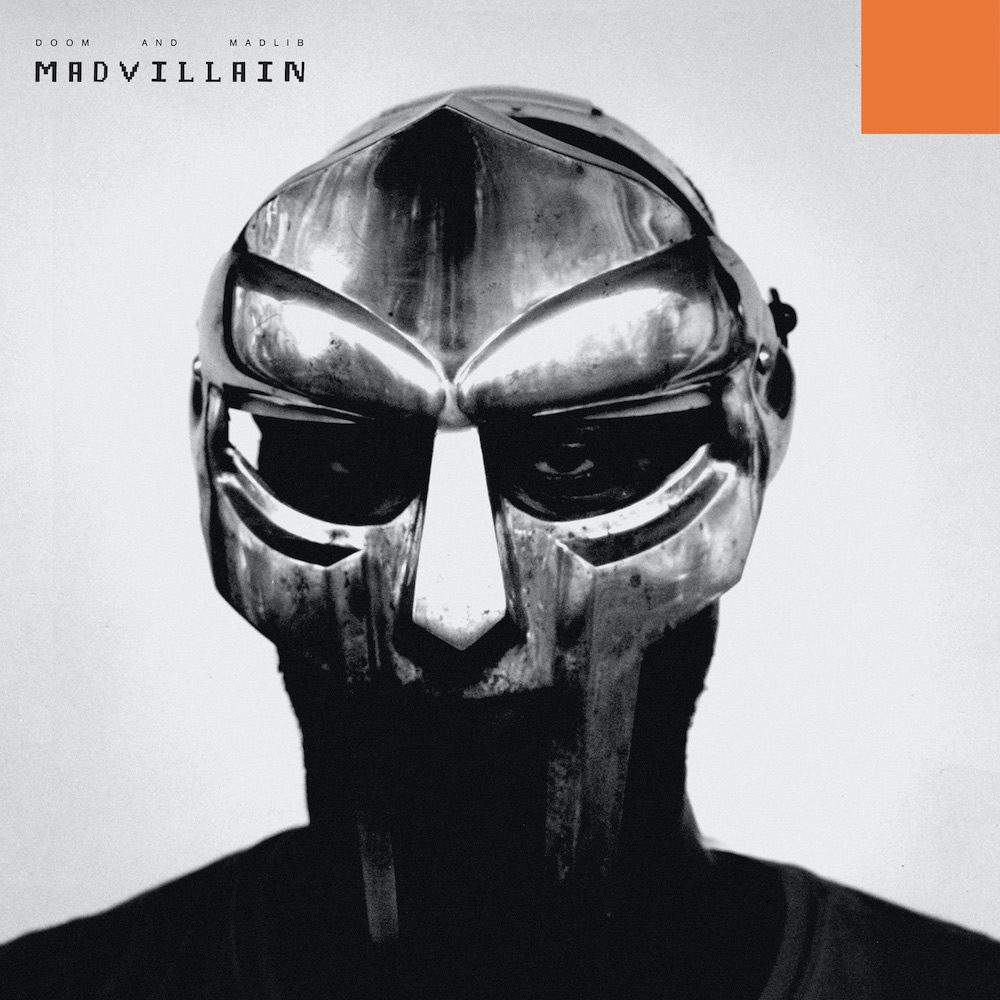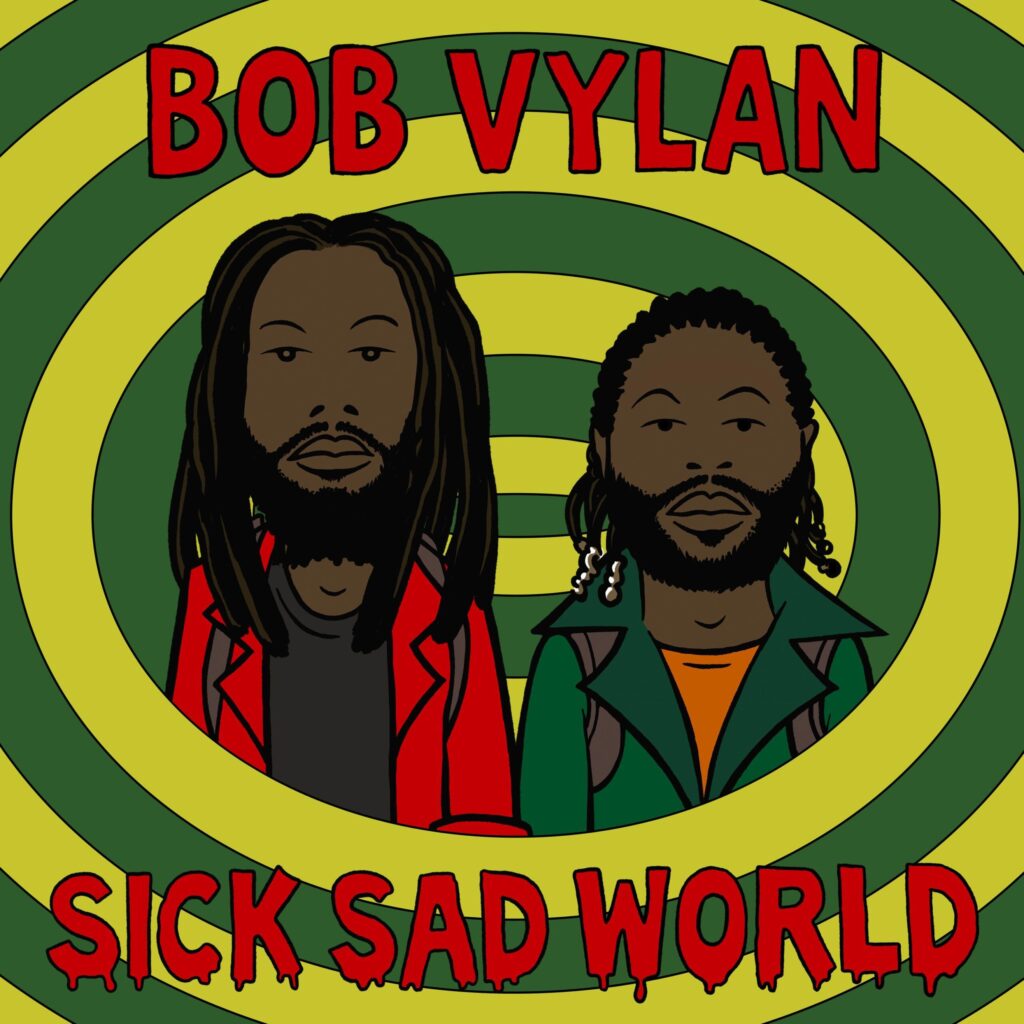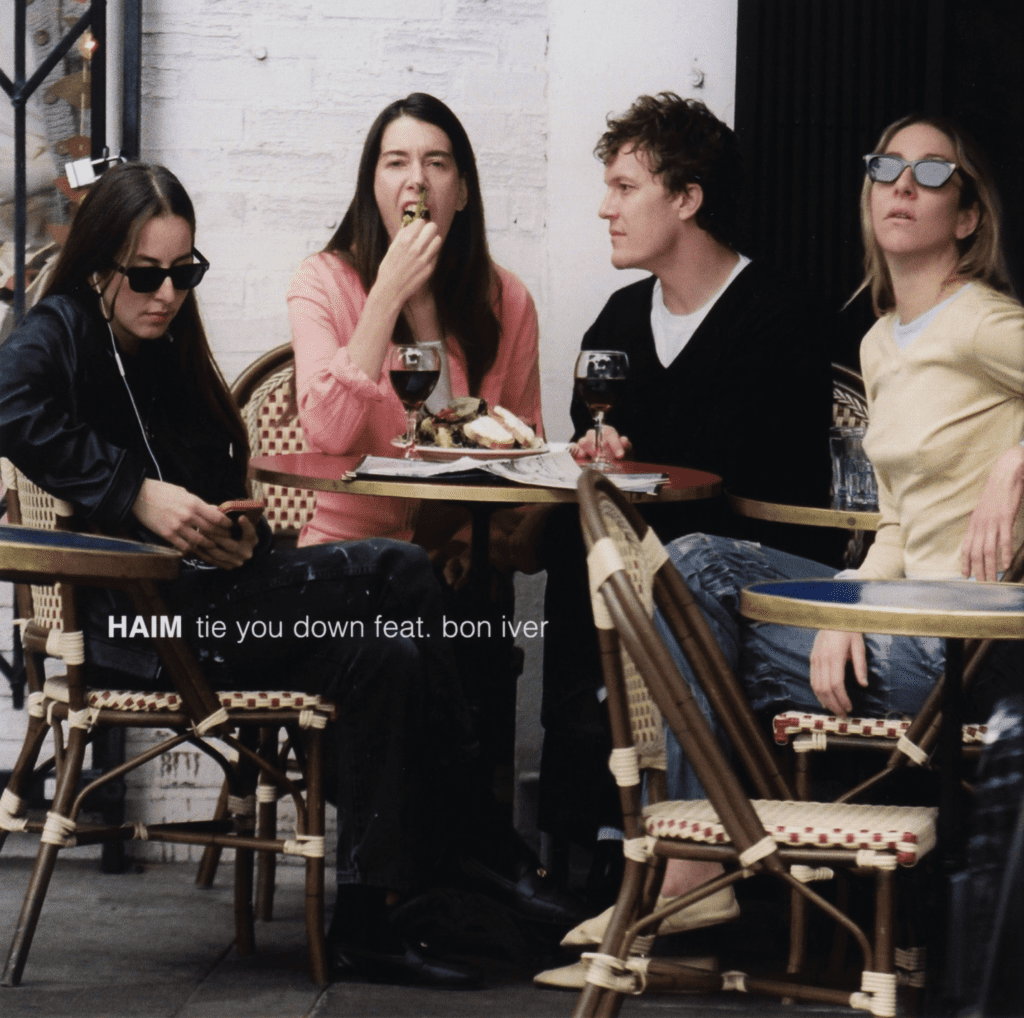
Sometimes, you see the album cover and just know. When MF DOOM and Madlib came together to release Madvillainy, there was already plenty of lore attached to both artists, but you didn’t necessarily need to know any of that. Instead, you could just walk into a record store and behold the image that first arrived on shelves 20 years ago. (The official anniversary is Saturday.) By itself, that picture was enough to capture imagination. Most of MF DOOM’s records used his masked comic-book persona to cartoonish ends, but that’s not what happens with Madvillainy. Instead, Stones Throw art director Jeff Jank captured DOOM in stark greyscale, his helmet gleaming and even the exposed parts of his face sunk into shadow. Only DOOM’s eyes, lidded and suspicious, shine out of all that metal. It’s the kind of album cover that reels you in even as it keeps you at arm’s length.
This was the DOOM way. You were not supposed to know MF DOOM. Instead, DOOM kept himself out of the public eye, making his singular music on his own terms without giving too much of himself to the world. The mask served multiple functions. It created a comic-book alter-ego that allowed him to build his own mythology. It enabled him to walk down the street, or even mix in with the crowd at his own shows, without being recognized. And it offered a layer of protection from a cold, hostile world. DOOM had already known tragedy — the death of his younger brother Subroc and the indifferent major-label landscape that greeted their old group KMD. After that, the former Zev Love X would no longer expose his face to the world. Instead, he would keep himself sealed off forever.
DOOM was so isolated that Madvillainy almost never came to be. A great Jeff Weiss Pitchfork piece from 2014 outlines the genesis. The short version: After releasing his 1999 manifesto Operation: Doomsday, DOOM fell back off the map, disappearing from music and raising his kids in the Atlanta suburb of Kennesaw. Struggling rap indie Stones Throw Records finessed Madvillainy into existence as a way to keep Madlib, its own enigmatic in-house genius, interested in making rap music. Madlib, another rapper/producer with his own stories of mainstream-rap adjacency, started out making beats for the Likwit Crew, the California collective that included King Tee, Tha Alkaholiks, and a pre-ride-pimping Xzibit. When Madlib’s group Lootpack fell apart, he adapted the sped-up squeaky-voiced alter-ego Quasimoto, released the cult-favorite 2000 album The Unseen, and then got deep into Yesterday’s New Quintet, the jazz project where he played every instrument. But those Yesterday’s New Quintet records weren’t selling, and Stones Throw had to convince Madlib to make some music that might actually move some CDs.
In a 2000 interview, Madlib mentioned two artists who might make for dream collaborators: J Dilla and MF DOOM. (The man has always had good taste.) Both names represented opportunities for Stones Throw, but both were big asks. Around 2000, Dilla was operating in superstar circles, lending his broken-beat aesthetic to big records from D’Angelo and Q-Tip. DOOM, meanwhile, was secluded from the underground rap world. Through a friend who lived in the same suburb, Stones Throw general manager Egon passed a beat CD to DOOM, who’d never heard of Madlib. But DOOM loved the music, and he wanted to make a record. An intermediary demanded two things: A plane ticket to Los Angeles and a $1,500 advance. This was a reasonable request, but Stones Throw didn’t have the money. They still brought him out to California and stalled the invoices for long enough that the album was already underway. Madlib and DOOM spent days in sessions, fueled by weed and shrooms, at Madlib’s studio, a converted ’50s bomb shelter. Madvillainy was literally recorded underground. It’s almost too on-the-nose.
DOOM had his own production aesthetic, a choppy and jagged collage of warped ’80s soul samples. Madlib’s dusty, obscuritan style was complementary but different, and it brought different things out of DOOM. Both worked at furious clips. Madlib kept feeding beats to DOOM, and DOOM worked around those instrumentals, adding his own free-associative flow where there was room to add anything. He laid down his tracks quickly, wanting to get back to his family before too much time slipped away. When they were finished, Madlib went on a trip to Brazil to give a Red Bull Music Academy talk and to hunt for records. There, in his São Paulo hotel room, he built the beats for Madvillainy and a few other future projects, using nothing but a 303 sampler, a portable turntable, and a tape deck. While he was there, someone swiped a cassette of what was supposed to be the album, took it back to the US, and leaked it online. The album was still more than a year away from release. Both Madlib and DOOM promptly lost interest and moved on to other projects.
DOOM caught the bug again, and he cranked out two different albums under two different alter-egos, King Geedorah’s Take Me To Your Leader and Viktor Vaughn’s Vaudeville Villain, a few months apart from one another in 2003. Madlib got his J Dilla collab, and the resulting Champion Sound, released under the Jaylib name, got good reviews but didn’t sell enough copies to put Stones Throw in the black. Eventually, DOOM and Madlib returned to Madvillainy. Madlib made his web of samples even more complex, and DOOM re-recorded his lyrics, delivering everything in a sleepier, more muttery monotone. The record didn’t have an effective closer, so Madlib and DOOM recorded “Rhinestone Cowboy,” on which DOOM obliquely describes the leak scenario that almost derailed the album’s release: “It speaks well of the hyper base/ Wasn’t even tweaked, and it leaked into cyberspace/ Couldn’t wait for the snipes to place at least a tracklist in bold-print typeface.”
Madvillainy came into the world at a crossroads moment for underground rap. The late-’90s boomlet around Rawkus Records had already died away, and former Fat Beats habitué Eminem already existed in a different galaxy. But Kanye West, another guy with connections to the Rawkus world, had just exploded into full-on mainstream stardom, and he was still connected enough to that world that he’d produce and rap on a Dilated Peoples single. Def Jux and Rhymesayers had developed into underground touring empires, playing the same circuits as indie rock bands, but Madlib and DOOM weren’t part of those worlds. They were more elusive and singular, more likely to build their own cosmologies out of their extensive record collections. So it surprised everyone when Madvillainy connected the way that it did.
When Madvillainy came out, the idea of full-album rapper/producer pairings was slightly novel. The Neptunes could produce a whole Clipse album, and Timbaland could do the same for Missy Elliott, but those were superstar beatmakers who could command major-label budgets just by signing on. In the underground, the idea of a sustained-vibe combination seemed like an intriguing approach, but it wasn’t widespread yet. The same day that Madvillainy came out, Def Jux released Murs and 9th Wonder’s Murs 3:16: The 9th Edition. I bought both albums on the same day. One of them stayed in my CD player a whole lot longer.
Madvillainy resonated in part because of how unfriendly it was. Even in indie-rap circles, artists tended to make music that could get at least theoretical radio airplay, even if it was just college radio. Madvillainy wasn’t like that. It was jagged and off-kilter. The songs didn’t have choruses. Madlib transformed his samples into deep head-nodders, but he also undercut his own grooves by interrupting himself with samples that came flying in from nowhere. His mixing job panned between speaker channels with jarring force. Songs were sometimes two minutes or less. DOOM rapped in a vocabulary that combined rap slang with old-timey gangster-movie dialogue and Hanna-Barbera cartoon references. Sometimes, he seemed to exist beyond meaning, just spitting words because he liked the way they tasted in his mouth: “A foe for ransom, flows is handsome/ O’s in tandem, anthem, random tantrum.” To listen to Madvillainy, you had to get on its level.
But I wanted to get on its level. The album was so inviting in its strangeness that I kept coming back. Without hooks, DOOM’s voice and delivery became a hook. There’s a whole song on Madvillainy about a girl with bad breath, but DOOM himself sounded like he subsisted on Funyuns and Olde English, which would’ve made his own situation grim. DOOM sometimes spit lines that worked as indie-rap statements of intent, but it sounded like he landed on them organically and maybe even accidentally while talking his shit: “The rest is empty with no brain, but the clever nerd/ The best MC with no chain ya ever heard.” When Madlib rapped, usually through his Quasimoto voice-filters, it was either to advocate for weed or to recite Sun Ra poetry. These guys weren’t into real hip-hop grandstanding. They were just in it for a good time. Madlib’s beats were the work of an addled and internal mind, and DOOM’s punchlines were of the horny-uncle variety: “Spit so many verses sometimes my jaw twitches/ One thing this party could use is more, ahem, booze.”
It was hypnotic. By pursuing their own inimitable styles, these two guys hit upon something powerful. DOOM’s best lines didn’t necessarily jump out at first. Instead, they were worded so richly and intricately, and delivered so offhandedly, that you might not catch them for weeks: “Off pride, tykes talk wide through scar meat/ Offsides like how Worf rides with Starfleet.” I’d get certain lines stuck in my head, and then I didn’t feel right until I could get to my Discman and put them back on: “Lookie here, it’s just the way the cookie tear/ Prepare to get hurt and mangled like Kurt Angle, rookie year.” (I loved that one. That first year of Kurt Angle really was special.) You could get lost in Madvillainy. You still can.
MF DOOM had a long career and did some amazing things, but he never sounded better than he did on Madvillainy. Somehow, the stars aligned, and DOOM’s voice clicked into place just right. He spun tales of his own mythology that doubled as hard-life memoirs: “His life is like a folklore legend/ Why you so stiff? You need to smoke more, bredren/ Instead of trying to riff with the broke war veteran/ Spliff made him swore he saw heaven he was seven.” He let the world know that he’d be a callous lover even if he linked up with his favorite ’80s R&B queen: “For fake, if he was Anita Baker’s man/ He’d take her for her masters, hit it once, and shake her hand/ On some ol’ ‘Thank ya, ma’am’ and ghost her/ She could mind the toaster if she sign the poster.” He shouted out kids’ TV from the ’70s even as he lost himself in the sheer beauty of language: “Goony goo-goo, loony cuckoo, like Gary Gnu off New Zoo Revue/ But who knew the mask had a loose screw?” His most stoned digressions were also his most entrancing.
Madvillainy was a critical and cult success. On the Stones Throw scale, that meant it was a hit. The album cracked the lower reaches of the Billboard charts, sold a couple hundred thousand copies, and kept the lights on at the label. The one-off nature of Madvillainy only added to its legend. DOOM and Madlib never recaptured that chemistry again. For years, they talked about a follow-up. A few one-off tracks eventually came out, and the two principles occasionally promised that a new album was imminent. At one point, DOOM told Stones Throw boss Peanut Butter Wolf that he only needed to tweak a few things, but when Wolf posted the conversation on Instagram, DOOM clammed up again. Then DOOM passed away in 2020, moving that second album into the realm of the hypothetical. Even if someone eventually pulls the demos from DOOM’s stash and releases them, it won’t feel like a real Madvillain album. Madvillainy is all we get. It’s enough.
The randomness of Madvillainy is its magic — the all-sample instrumental tracks, the songs that trail off just as they’re getting going, the inexplicable solo-song showcase for Madlib’s old Lootpack colleague Wildchild. It’s a jigaw puzzle where someone hammers the pieces that don’t fit into place, somehow turning the final product into something much more beautiful than the real completed version would’ve been. In the decades that followed, Madlib made some great music with some other rappers — his two albums with Freddie Gibbs are magnificent — without quite recreating the feeling of Madvillainy. Meanwhile, DOOM’s stylistic descendants have developed their own version of his deep-pocket internal logic. Nobody will ever sound like him, but using his influence, a rapper like Earl Sweatshirt might sound more like himself.
When the news of DOOM’s passing circulated, it was a softly crushing blow. He’d been stuck in London for years, unable to return to the US even though he’d spent most of his life over here. His music had become erratic and distracted. Nobody knew about whatever health problems he had. The man’s persona was slippery enough that some people thought, hoped, that his death might be one last prank from a guy who famously sent masked imposters to play shows in his stead. But we all knew that was it. When I heard the news, the vision of DOOM that appeared in my head was the one on the Madvillainy cover. Whether intentionally or not, DOOM had painted his masterpiece and created the work that would define his presence on the planet long after that presence ended. Twenty years later, Madvillainy has outlasted DOOM. One day, it will outlast Madlib. It’ll outlast the rest of us, too.



